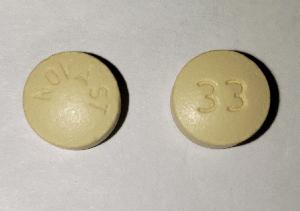Nifedipine Interactions
There are 633 drugs known to interact with nifedipine, along with 9 disease interactions, and 4 alcohol/food interactions. Of the total drug interactions, 27 are major, 552 are moderate, and 54 are minor.
- View all 633 medications that may interact with nifedipine
- View nifedipine alcohol/food interactions (4)
- View nifedipine disease interactions (9)
Most frequently checked interactions
View interaction reports for nifedipine and the medicines listed below.
- Aspir 81 (aspirin)
- Aspirin Low Strength (aspirin)
- Benadryl (diphenhydramine)
- CoQ10 (ubiquinone)
- Crestor (rosuvastatin)
- Cymbalta (duloxetine)
- Eliquis (apixaban)
- Fish Oil (omega-3 polyunsaturated fatty acids)
- Flonase (fluticasone nasal)
- Jardiance (empagliflozin)
- Lantus (insulin glargine)
- Lasix (furosemide)
- Lipitor (atorvastatin)
- Lyrica (pregabalin)
- Metoprolol Succinate ER (metoprolol)
- Metoprolol Tartrate (metoprolol)
- MiraLAX (polyethylene glycol 3350)
- Nexium (esomeprazole)
- Ozempic (semaglutide)
- Paracetamol (acetaminophen)
- Plavix (clopidogrel)
- Synthroid (levothyroxine)
- Tylenol (acetaminophen)
- Vitamin B12 (cyanocobalamin)
- Vitamin C (ascorbic acid)
- Vitamin D2 (ergocalciferol)
- Vitamin D3 (cholecalciferol)
- Xanax (alprazolam)
- Xarelto (rivaroxaban)
- Zyrtec (cetirizine)
Nifedipine alcohol/food interactions
There are 4 alcohol/food interactions with nifedipine.
Nifedipine disease interactions
There are 9 disease interactions with nifedipine which include:
- aortic stenosis
- cardiogenic shock/hypotension
- coronary artery disease
- liver disease
- hypertension
- myocardial infarction
- CHF/AMI
- renal dysfunction
- GI narrowing
More about nifedipine
- nifedipine consumer information
- Compare alternatives
- Pricing & coupons
- Reviews (167)
- Drug images
- Side effects
- Dosage information
- Patient tips
- During pregnancy
- Support group
- Drug class: calcium channel blockers
- Breastfeeding
Related treatment guides
Drug Interaction Classification
| Highly clinically significant. Avoid combinations; the risk of the interaction outweighs the benefit. | |
| Moderately clinically significant. Usually avoid combinations; use it only under special circumstances. | |
| Minimally clinically significant. Minimize risk; assess risk and consider an alternative drug, take steps to circumvent the interaction risk and/or institute a monitoring plan. | |
| No interaction information available. |
See also:
Further information
Always consult your healthcare provider to ensure the information displayed on this page applies to your personal circumstances.


